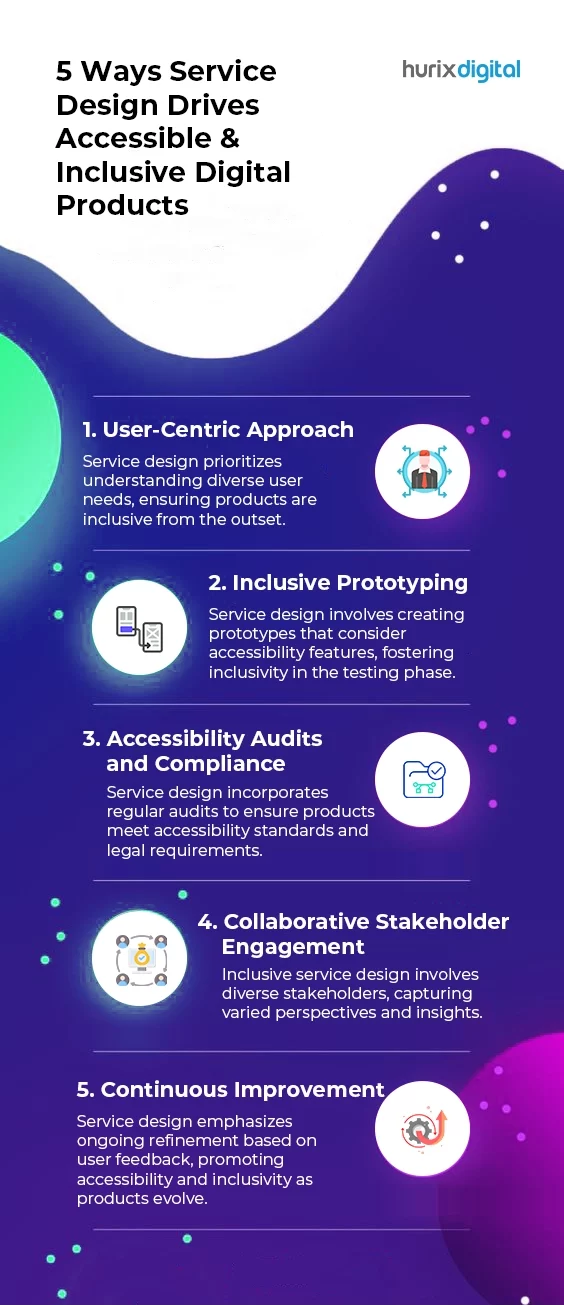Empower inclusivity in digital products! Uncover 5 impactful ways service design leads the charge: user-centric approach, inclusive prototyping, accessibility audits and compliance, collaborative stakeholder engagement & continuous improvement. Elevate your digital offerings with accessible and inclusive design!
Revolutionize digital inclusivity! Explore the power of strategic design thinking with Hurix Digital. Transform your products for accessibility and inclusion. Contact us now to know more!

Understanding the Impact of Service Design on Accessibility and Inclusivity
In the digital age, creating accessible and inclusive products is essential. Service design plays a critical role, focusing on user needs to ensure diverse audiences can effectively use digital solutions.
Putting Users First: A Core Design Strategy
Service design centers on a user-centric approach, emphasizing understanding diverse user needs from the start. By engaging with various user groups, designers identify challenges faced by different demographics, leading to more inclusive products.
- Tailored Solutions: Customizing features based on feedback enhances usability for all.
- Diverse Perspectives: Engaging users from various backgrounds fosters a deeper understanding of accessibility needs.
Importance of Inclusive Prototyping
Inclusive prototyping is key in human-centered design, focusing on models that incorporate accessibility features. This practice allows designers to test ideas with real users, ensuring the final product meets everyone’s needs.
- Iterative Testing: Early testing with diverse users reveals potential barriers.
- Feedback Integration: Incorporating user feedback into prototypes leads to more refined designs.
Accessibility Audits and Compliance
Regular accessibility audits ensure digital products comply with standards, enhancing user satisfaction and meeting legal requirements.
- Standard Adherence: Compliance with guidelines like WCAG ensures usability for all.
- Risk Mitigation: Proactive audits reduce legal risks related to accessibility.
Collaborative Stakeholder Engagement
Engaging various stakeholders is crucial in strategic design planning, capturing different perspectives and leading to innovative solutions addressing a wider array of accessibility needs.
Continuous Improvement in Service Design
Service design emphasizes continuous improvement. By seeking feedback and iterating on designs, organizations ensure their products remain accessible and inclusive as user needs evolve.
Conclusion
In conclusion, service design significantly contributes to developing accessible and inclusive digital products. By prioritizing user needs, engaging stakeholders, and conducting regular audits, organizations create solutions that cater to diverse audiences, enhancing user experience and satisfaction.




